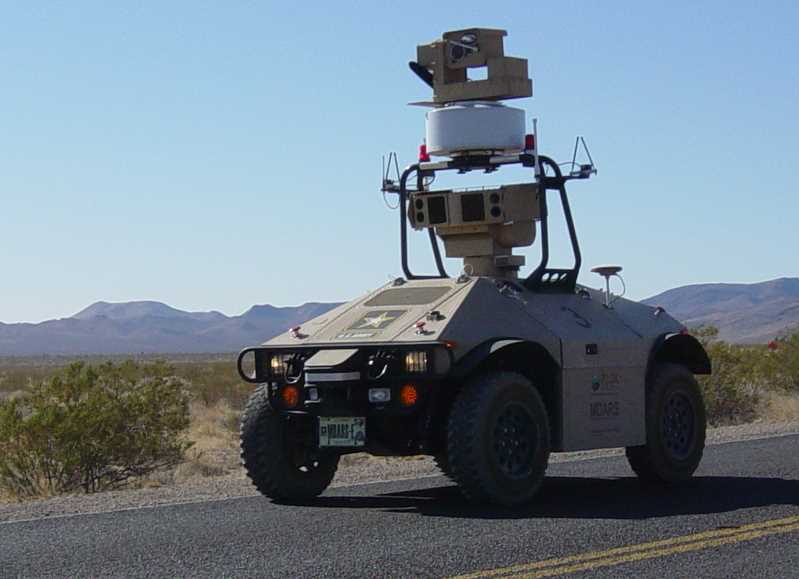 |
| Mobile Detection Assessment Response System - National Nuclear Security Administration |
Real-time radiation detection measurement methods are considered critical in situations where interception of these devices prior to a planned detonation or release of radioactive materials takes place as well as in the cargo screening areas and deployment of large radiation detection networks are highly desirable.
Object tracking camera technology consists of an algorithm that is trained to track a given object in an offline manner by using information from the recorded video to optimize tracking. Current technologies to track objects use either sound localization, magnetic detection or light sources to illuminate the object. This technology can be trained to recognize and track an object feature (e.g. a face). This video surveillance and analytics technology is useful for security applications such as investigating theft and sabotage for business and homeland security purposes.
Detecting chemicals and hazardous gases, including explosives, utilizes remote sensing devices that output signals considered as fingerprints of using certain chemical materials or the presence of some undesired gases. An example of these devices use a fluorescent polymer technology, where thin polymer films emit visible light when exposed to ultraviolet rays, but molecules of explosive materials stop the fluorescence. A single explosive material molecule can quench many thousands of fluorescence reactions, greatly increasing sensitivity. In addition, the use chemical of materials that ignites resulting in a light of certain wavelength and intensity is of a great importance in the field of search and rescue. Using an electro-optical sensor platform and such a chemical light source tuned to produce a certain wavelength enables the detection and localization of people during search and rescue missions.
Research within the Center in the area of Safety and Physical Security focus on the following topics:
- Perimeter access control, access control to restricted areas and detection of people in non-authorized areas;
- Explosives and hazardous gases;
- Detection of gas levels and leakages in industrial environments, surroundings of chemical factories and inside mines;
- Tunable chemical light sources for search and rescue missions;
- Explosives and bomb sniffers for homeland security.

